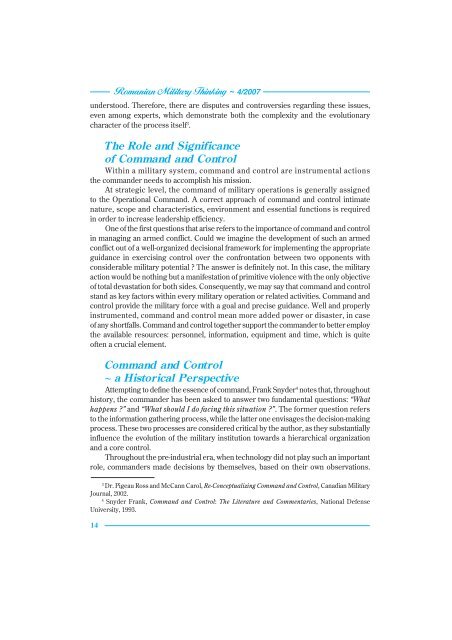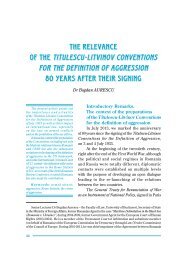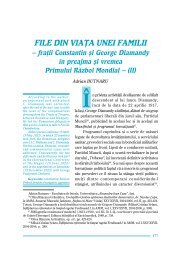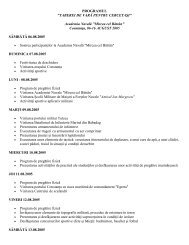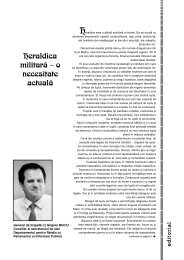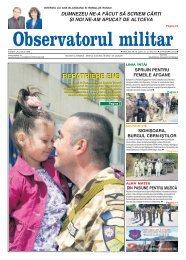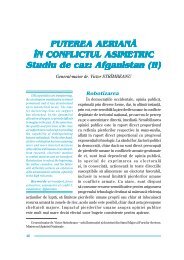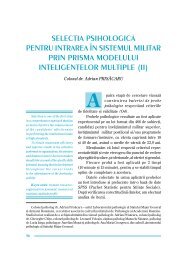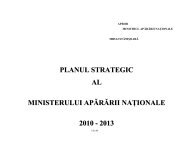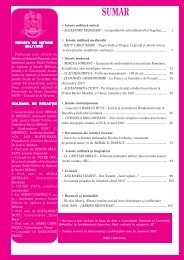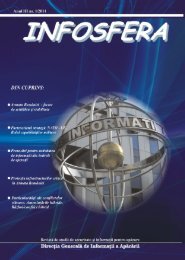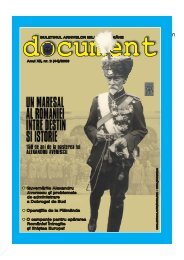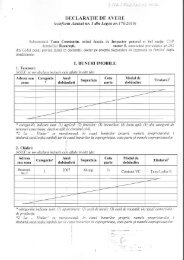Romanian Military Thinking
Romanian Military Thinking
Romanian Military Thinking
You also want an ePaper? Increase the reach of your titles
YUMPU automatically turns print PDFs into web optimized ePapers that Google loves.
14<br />
<strong>Romanian</strong> <strong>Military</strong> <strong>Thinking</strong> ~ 4/2007<br />
understood. Therefore, there are disputes and controversies regarding these issues,<br />
even among experts, which demonstrate both the complexity and the evolutionary<br />
character of the process itself 3 .<br />
The Role and Significance<br />
of Command and Control<br />
Within a military system, command and control are instrumental actions<br />
the commander needs to accomplish his mission.<br />
At strategic level, the command of military operations is generally assigned<br />
to the Operational Command. A correct approach of command and control intimate<br />
nature, scope and characteristics, environment and essential functions is required<br />
in order to increase leadership efficiency.<br />
One of the first questions that arise refers to the importance of command and control<br />
in managing an armed conflict. Could we imagine the development of such an armed<br />
conflict out of a well-organized decisional framework for implementing the appropriate<br />
guidance in exercising control over the confrontation between two opponents with<br />
considerable military potential ? The answer is definitely not. In this case, the military<br />
action would be nothing but a manifestation of primitive violence with the only objective<br />
of total devastation for both sides. Consequently, we may say that command and control<br />
stand as key factors within every military operation or related activities. Command and<br />
control provide the military force with a goal and precise guidance. Well and properly<br />
instrumented, command and control mean more added power or disaster, in case<br />
of any shortfalls. Command and control together support the commander to better employ<br />
the available resources: personnel, information, equipment and time, which is quite<br />
often a crucial element.<br />
Command and Control<br />
~ a Historical Perspective<br />
Attempting to define the essence of command, Frank Snyder 4 notes that, throughout<br />
history, the commander has been asked to answer two fundamental questions: “What<br />
happens ?” and “What should I do facing this situation ?”. The former question refers<br />
to the information gathering process, while the latter one envisages the decision-making<br />
process. These two processes are considered critical by the author, as they substantially<br />
influence the evolution of the military institution towards a hierarchical organization<br />
and a core control.<br />
Throughout the pre-industrial era, when technology did not play such an important<br />
role, commanders made decisions by themselves, based on their own observations.<br />
3 Dr. Pigeau Ross and McCann Carol, Re-Conceptualizing Command and Control, Canadian <strong>Military</strong><br />
Journal, 2002.<br />
4 Snyder Frank, Command and Control: The Literature and Commentaries, National Defense<br />
University, 1993.


